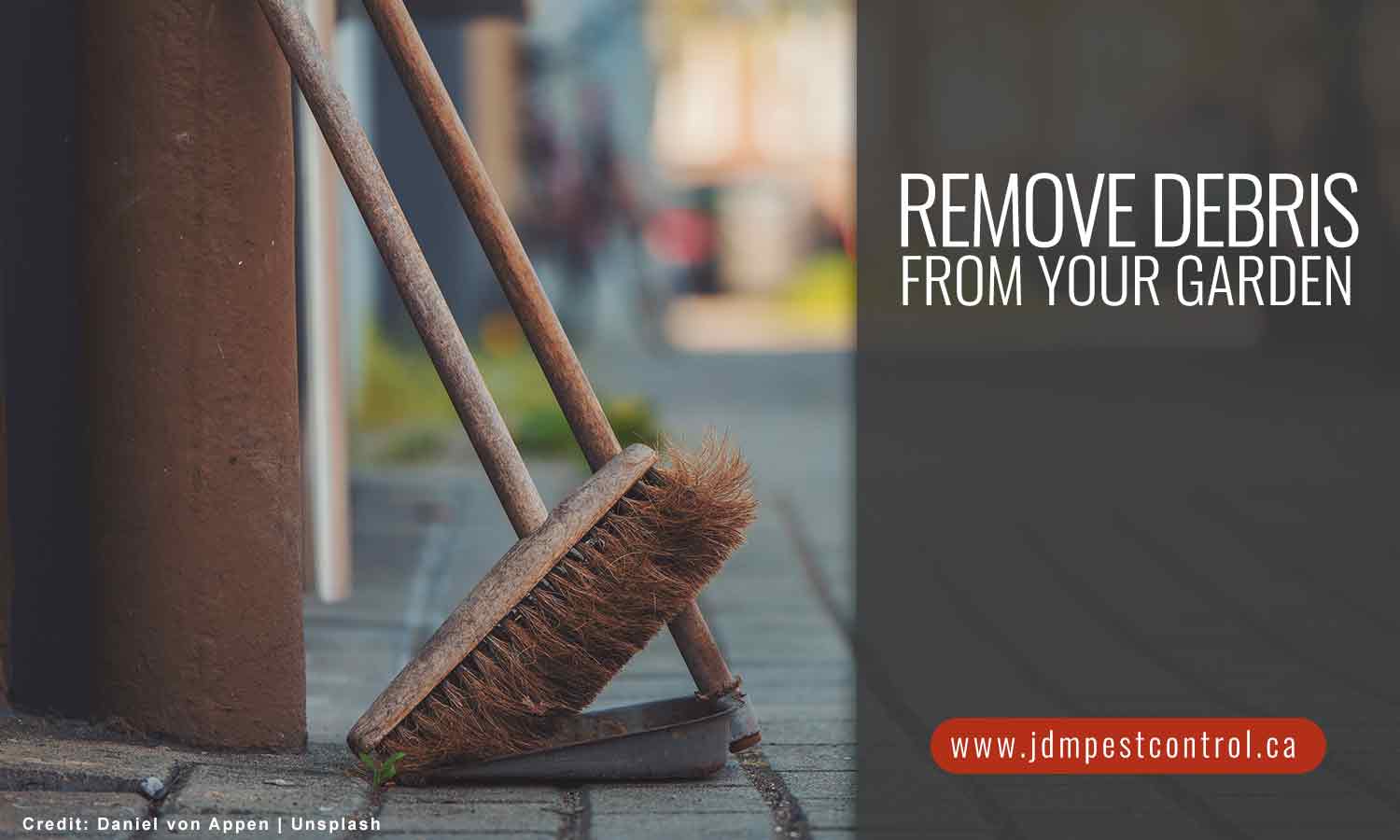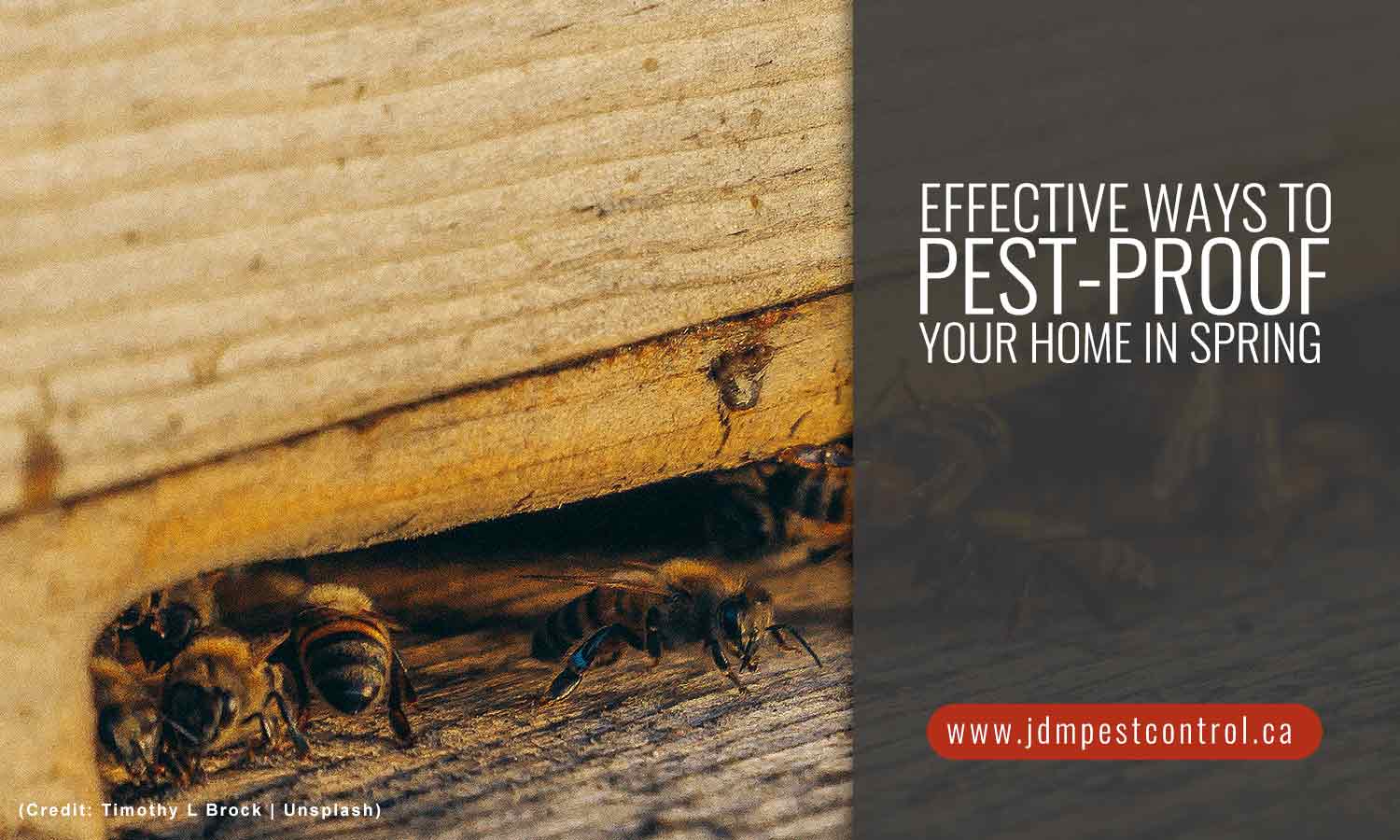With the onset of the warm weather comes increased pest activity. Preventing the entry of pests into your home through effective pest control measures is simple, but addressing an infestation problem is a different challenge.
Spring can bring a number of pests that may invade your home space and garden, including:
- Ants
- Flies
- Bed bugs
- Bees
- Wasps
- Mosquitoes
- Ticks
- Hornets
Keep these unwanted visitors out of your property so you can enjoy a safe and comfortable spring. In this post, we share with you some effective tips on how to pest-proof your home.
General Prevention Measures
- Store food properly.

After the ice has thawed, pests start to hunt for survival essentials like food, water, and shelter. Avoid inviting them into your property by storing your food securely. Keep them in air-tight containers and make sure all your trash bins are sealed well. Wash used dishes and clean up spills immediately.
Keeping potential food sources near the exterior of your home can also draw insects. Food sources like bird seed should be kept approximately 100 feet away from your home. Pet food and trash should be stored in closed containers. If you have a vegetable garden, add fencing or netting around the perimeter.
- Fix leaks and remove standing water.
Bugs and mosquitoes are attracted to water. Any form of water source near your home can serve as a hotspot for pests. Inspect possible sources of leakage (roof leaks and other exterior leaks near your home) and address them right away.
Standing water in plant containers, toys, and in lawn furniture pieces can become a breeding ground for mosquitoes and disease-causing microorganisms. Termites, carpenter ants, and rodents can tunnel through moist wood. Before spring officially arrives, make sure to get rid of these water sources.
Also, keep your gutters clean throughout the year to ensure smooth flow of water. Keep your crawl spaces dry at all times.
- Keep your home exterior clean.

Thorough spring cleaning can go a long way in pest proofing your home. Yard wastes (e.g. dried leaves and branches) can invite ticks and stinging insects into your residence. Remove any yard debris from your yard and keep your porches, basements, decks, and shutters clean. Dirty, dark, and quiet spaces can easily become a hotbed for pest activity if left unchecked.
- Maintain your yard.

Inspect your yard. Melted snow, dead leaves, and other debris all encourage potential pest hazards. Damp wood can also become a shelter for spring pests. Eliminate them from your yard along with stagnant water and clogged gutters. Take time to clean and maintain your property to leave no room for pest problems to arise in the future.
- Seal your home.
The tiniest gaps and cracks around your home can act as entryways for nuisance critters. Use caulk or compound cement to close up all cracks, crevices, holes, and tiny gaps. Install window screens and keep your doors closed even in particularly nice weather to prevent bugs and flies from entering your rooms.
- Manage moisture.

The shift from winter to spring produces a lot of moisture due to rain, snow, overflow, and runoff. Homeowners should be proactive in controlling moisture levels at home, as pests are drawn to water. In spring, they look for drinking sources and damp environments where they can take shelter.
Check for leaky pipes, pools of water, and blocked gutters and eliminate moisture in these areas. On rainy days, make sure to keep your gutters clean and maintain your plumbing.
How to Prevent Pests from Common Areas of Your Home

There are specific pest proofing measures you can take to keep pests away from specific areas in your home this spring. Check out the tips below:
- Roof – A dilapidated or damaged roof gives pests (like bees, termites, hornets, and wasps) easy access to your home. Repair cracks by filling them with roofing cement. Eliminate debris and standing water from drain pipes to avoid blockage. Remove nests from the overhang of your roof and in between roof tiles.
- Attic – Pests like termites, wasps, and hornets find attics an ideal spot to build their shelter and nests. The wood beams and items enclosed in cardboard boxes make a great food supply to these pests. Store your belongings inside sturdy plastic boxes to protect them from hungry pests. Inspect exposed wood beams for termite damage. You can do so by pressing your thumb against the timber to see if it’s turned soft and spongy.
- Air Vents – Like your roof, air vents are also an immediate entryway to your home. Air vents can make your home vulnerable to termite swarms in spring. To prevent the entry of termites, ants, and wasps, install mesh covers on your vents.
- Bedroom – Bed bugs, flies, mosquitoes, termites, and wasps see bedrooms as a warm refuge and a good source of food. Stop giving these pests a foothold by keeping your windows shut throughout the day and reducing the number of wooden furniture pieces.
Regularly check your beds, bed frames, pillows, mattresses, and carpet for traces of bed bugs. If the items are positive for bed bug infestation, wash them at a high temperature (at least 140°F) for about 90 minutes.
- Windows – Avoid keeping your windows open for the whole day, as they can become a wide entry route for pests. Keep out ants, flies, bees, mosquitoes, termites, and wasps from your home by shutting your windows (especially on swarming periods). You can also install a fly screen to allow ventilation without inviting flying pests.
- Gardens – Because they’re abundant in food and breeding areas, gardens are a hotspot for many pests including ants, flies, bees, mosquitoes, ticks, hornets, and termites. Here are some tips to pest-proof your garden:
- Remove stagnant water.
- Ensure woodpiles are elevated and are far away from your home. exterior (particularly from your foundations).
- Seal gaps and cracks on your patios.
- Remove unsightly tree stumps.
- Minimize shrubbery and vegetation.
- Use gravel, plastic, or rubber mulch instead of wood/sawdust.
- Store compost in a tight-lidded container.
- Inspect your garden regularly.
- Kitchen – Kitchens are a natural target for pests like ants, flies, and rodents. Pest-proof your kitchen by storing your food in airtight containers, emptying your garbage cans daily, and keeping surfaces spotless from spillage and crumbs. Check your pipes for leakage and repair damages as soon as possible.
- Garage – Even your garage can serve as a nesting area for pests like ants, hornets, termites, and wasps. Inspect corners for nests of wasps and hornets and make sure the garage isn’t damp. Store your valuable items inside plastic boxes (never place the boxes on the floor). Seal all entrances and repair existing damages to the garage.
- Garbage bins – Pests can smell a full and open garbage can from a distance. Avoid attracting their attention by emptying the cans regularly and using tight-fitting lids.
Quit Worrying About Springtime Pests!
Spring is the best time to boost your home’s defence against pest invasion. Following the pest-proofing tips can help you ward off these unwanted guests throughout the warmer months. However, when a pest management problem arises, don’t hesitate to bring in the experts. If you suspect your home has been invaded by any kind of pest, contact a professional pest control company who can deal with your woes in no time.
JDM Pest Control has been helping homeowners live a comfortable, pest-free life for 20 years now. If you’re searching for a complete range of pest control services in Aurora or surrounding areas, call 416-729-3568 to schedule an assessment and get $25 off!
